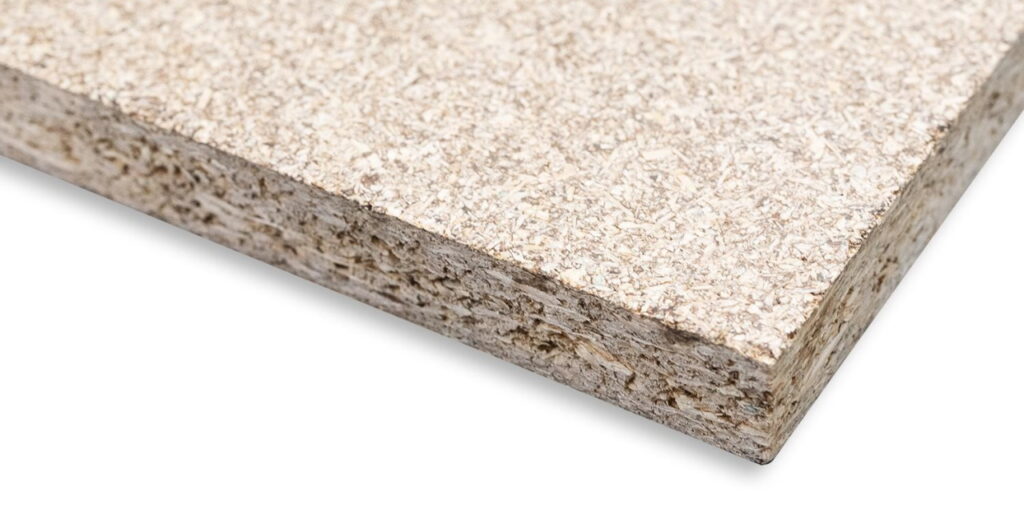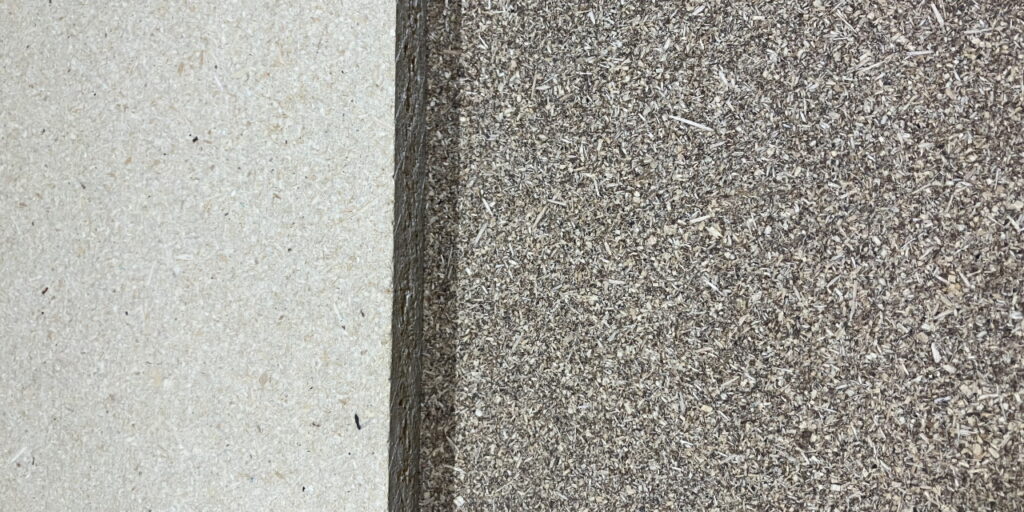Wood-based materials, including particleboard and fibreboard, play an important role in our daily lives. They are an integral part of a wide range of products, from furniture to flooring. These composites are manufactured by a process called hot pressing, which uses thermosetting resins as binders, giving them unique properties that enhance their utility. In particular, formaldehyde-based resins, such as urea-formaldehyde and melamine-formaldehyde, have become the binders of choice in the wood-based panel industry due to their cost effectiveness and high chemical reactivity. However, these resins are derived from non-renewable fossil resources and are known to emit formaldehyde, a pollutant that carries significant risks to both human health and the environment. (Pattis 2024.)
Lignin is a bio-based binder for the industry
These concerns have led to extensive research and development into bio-based binder formulations. This shift is being driven not only by the need to address health and environmental issues, but also by growing consumer demand for environmentally friendly products. One of the pioneers in this field is Koskisen Oyj, based in Järvelä, Finland. Recognising the need for innovation, Koskisen developed particleboard using a bio-based binder. Their product, ZERO furniture board as illustrated in Image 1, is an example of the potential of lignin as a bio-based binder. Lignin is a natural polymer that plays a crucial role in the structure of plant and tree cells, acting as a binder for cellulose and hemicellulose. It is the second most abundant natural polymer on Earth, after cellulose. (Jouanin & Lapierre 2012.)

Image 1. ZERO furniture board. (Koskisen 2024)
Derived as a by-product of pulp and paper production, lignin has historically been under-utilised. Large quantities have been burned for energy due to the complex and lengthy chemical treatments required to convert lignin waste into adhesives. (Pattis 2024.) However, significant progress has been made in this area. In 2022, researchers at Aalto University in Finland developed a breakthrough process that significantly reduces the chemical reaction time needed to produce lignin-based adhesives from up to ten hours to just a few minutes. This process eliminates the need for additional heating of the raw lignin, thereby reducing energy consumption. In addition, the by-products of this development process are limited to salt and caustic soda (lye), making it more environmentally sustainable. This innovation is a milestone for the industry, as previous lignin-based binders typically contained only 20–50% lignin. (Raski 2022.)
While the use of lignin-based binders does result in a darker surface colour of the product, as illustrated in Image 2., this slight aesthetic variation is a small price to pay for the significant environmental and health benefits (Pattis 2024).

Image 2. Comparison of conventional particleboard on the left and ZERO furniture board on the right. (Pattis 2024)
Bio-based binders in plywood production
Another wood-based material that warrants further investigation regarding the utilisation of bio-based binders is plywood. One study focuses on the use of polymeric methylene diphenyl diisocyanate (pMDI), which are already successfully employed in the production of MDF and particleboard. The primary challenges are premature curing of the adhesive prior to pressing and the tendency to stick to the plates. Furthermore, it is incompatible with water-based adhesives, which are commonly used in plywood production. This is due to the high reactivity of the pMDI with water. A potential solution to these issues is the mixing of pMDI adhesives with starch, which would allow for the control of reactivity and an easier application to plywood. In the study, the use of residues from soybeans, hemp seeds, and olive fruit and leaves as pMDI resin fillers in the manufacture of plywood panels is investigated. The results of the study showed that binders prepared with residual olive skin and defatted hemp seeds have promising performance and can be used in the manufacture of plywood panels. (Papadopoulou et al. 2024.)
Furthermore, a recent study has investigated the use of lignin in the production of plywood. The study focused on the use of slightly condensed lignin mixed with water, which is directly applied as a suspension on the veneers for plywood production without any additional physical or chemical treatments of the lignin beforehand. The study explored the potential of condensed lignin as a binder under elevated temperatures, observing similarities with the curing of wood adhesives such as phenol–formaldehyde and urea–formaldehyde resins during hot pressing. This suggests that lignin with minimal or no condensation could serve as a direct substitute for conventional wood adhesives. (Yang et al. 2023.)
Future outlook
The move towards bio-based binders in wood-based composites represents a significant step forward in creating more sustainable and health-conscious products. Companies such as Koskisen Oyj are leading the way, demonstrating that innovation in materials science can address pressing environmental concerns while meeting consumer demands. As the industry continues to evolve, the use of lignin and other bio-based materials could pave the way for a greener, healthier future. (Pattis 2024.)
Authors
Anna-Lena Pattis is a double degree student in the Wood Technology programme at LAB University of Applied Sciences.
Ilkka Tarvainen is a Senior Lecturer in Wood Technology, and he is responsible for the international issues of Wood Technology education at LAB University of Applied Sciences.
References
Jouanin, L. & Lapierre, C. 2012. Lignins: Biosynthesis, Biodegradation and Bioengineering. Amsterdam: Academic Press.
Koskisen. 2024.The Nordic Swan Ecolabel for Koskisen’s chipboard products. News 27.9.2024. Cited 25 Nov 2024. Available at https://koskisen.fi/en/the-nordic-swan-ecolabel-for-koskisen-chipboard-products/
Papadopoulou, E., Moutousidis, D., Kountouras, S., Argyropoulou, A., Stathopoulos, P., Skaltsounis, A. L., Ioannidis, R. O., Xanthopoulou, E., Malletzidou, L. & Chrissafis, K. 2024. New Bio-Based Binding Systems for Plywood Panels. Applied Sciences. Vol. 14 (13). Cited 30 Aug 2024. Available at https://doi.org/10.3390/app14135862
Pattis, A. 2024. Market analysis bio-based binder particleboards. Bachelor’s Thesis. LAB University of Applied Sciences, Faculty of Technology. Lahti. Cited 28 May 2024. Available at https://urn.fi/URN:NBN:fi:amk-2024052816873
Raski, V. 2022. Eco-glue can replace harmful adhesives in wood construction. News 10.8.2022. Cited 13 May 2024. Available at https://www.aalto.fi/en/news/eco-glue-can-replace-harmful-adhesives-in-wood-construction
Yang, G, Gong, Z., Luo, X., Chen, L. & Shuai, L. 2023. Bonding wood with uncondensed lignins as adhesives. Nature. Vol. 621, 511–515. Cited 30 Aug 2024. Available at https://doi.org/10.1038/s41586-023-06507-5




